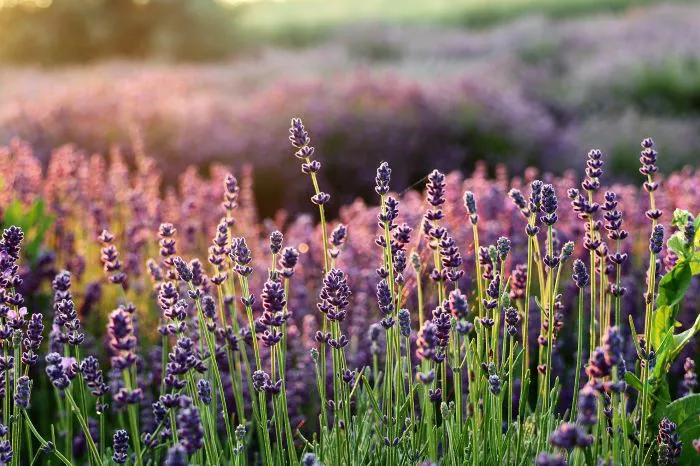Lavender is a popular and versatile herb known for its fragrant flowers and aromatic leaves. It is widely used in gardens, culinary dishes, and essential oils. Understanding how long it takes for lavender to flower is essential for gardeners and enthusiasts who want to enjoy its beauty and benefits. This article provides a detailed overview of the flowering process of lavender, including factors that influence blooming time and tips for successful growth.
Introduction to Lavender
Lavender belongs to the genus Lavandula, which includes several species and hybrids. The most common types grown for their flowers and fragrance are English lavender (Lavandula angustifolia), French lavender (Lavandula dentata), and Spanish lavender (Lavandula stoechas). Lavender plants are characterized by their slender stems, gray-green foliage, and spikes of small purple flowers. These flowers are not only beautiful but also attract pollinators such as bees and butterflies.
Typical Flowering Time for Lavender
Lavender typically flowers in late spring to early summer, depending on the species and growing conditions. In general, most lavender varieties will begin to bloom between late May and early July. The exact timing can vary based on several factors, including climate, location, and care practices.
Factors Influencing Flowering Time
Several factors can influence how long it takes for lavender to flower. Understanding these factors can help you optimize growing conditions and encourage healthy blooms.
Species and Variety
Different species of lavender have varying flowering times. English lavender usually blooms earlier than French and Spanish varieties. Within each species, there are also different cultivars that may have specific blooming characteristics. For example, some cultivars of English lavender may flower slightly earlier or later than others. Researching the specific variety you are growing can provide insight into its expected flowering time.
Climate and Growing Conditions
Climate plays a significant role in the flowering time of lavender. Lavender thrives in regions with a Mediterranean climate, characterized by warm, dry summers and mild winters. In areas with cooler climates, lavender may take longer to flower or may not bloom at all if temperatures are too low. Additionally, the amount of sunlight and temperature can affect blooming. Lavender requires full sun for at least six hours a day to produce healthy flowers. Insufficient sunlight can delay flowering.
Soil Quality and Drainage
Lavender prefers well-draining soil with a slightly alkaline pH. Poor soil quality or compacted soil can hinder growth and delay flowering. It is essential to amend the soil with organic matter or sand to improve drainage. Good drainage is crucial because lavender is susceptible to root rot in overly wet conditions. Ensuring the right soil conditions can promote healthy growth and timely blooming.
Watering Practices
Watering practices can also affect how long it takes for lavender to flower. Lavender is drought-tolerant and prefers to dry out between waterings. Overwatering can lead to root problems and delay flowering. During the growing season, it is advisable to water lavender deeply but infrequently, allowing the soil to dry out before the next watering. This approach encourages the plant to establish a strong root system and promotes flowering.
Fertilization
While lavender does not require heavy fertilization, providing the right nutrients can support healthy growth and flowering. A balanced, low-nitrogen fertilizer can be applied in early spring to encourage blooming. Excessive nitrogen can lead to lush foliage at the expense of flowers. Therefore, it is essential to use fertilizers sparingly and focus on promoting flowering rather than vegetative growth.
Pruning and Maintenance
Proper pruning is essential for encouraging lavender to flower. Pruning should be done after the flowering period to promote new growth for the following season. Cutting back the spent flowers and shaping the plant can lead to better air circulation and light penetration, which are crucial for blooming. Regular maintenance, including removing dead leaves and spent flowers, can also improve the overall health of the plant and its ability to flower.
Expected Timeframe for Flowering
From planting, it typically takes about one to three years for lavender to reach maturity and produce flowers. Newly planted lavender may not bloom in the first year as the plant establishes its root system. However, with proper care, you can expect to see flowers in the second or third year. Once established, lavender plants can produce flowers annually, often for several years.
Conclusion
Lavender is a beautiful and fragrant addition to any garden. Understanding how long it takes for lavender to flower involves considering various factors, including species, climate, soil conditions, watering practices, and maintenance. While it may take one to three years for newly planted lavender to bloom, established plants can provide stunning flowers each year. By providing optimal growing conditions, you can enjoy the beauty and benefits of lavender in your garden. With patience and care, you will be rewarded with the delightful blooms of this cherished herb.


